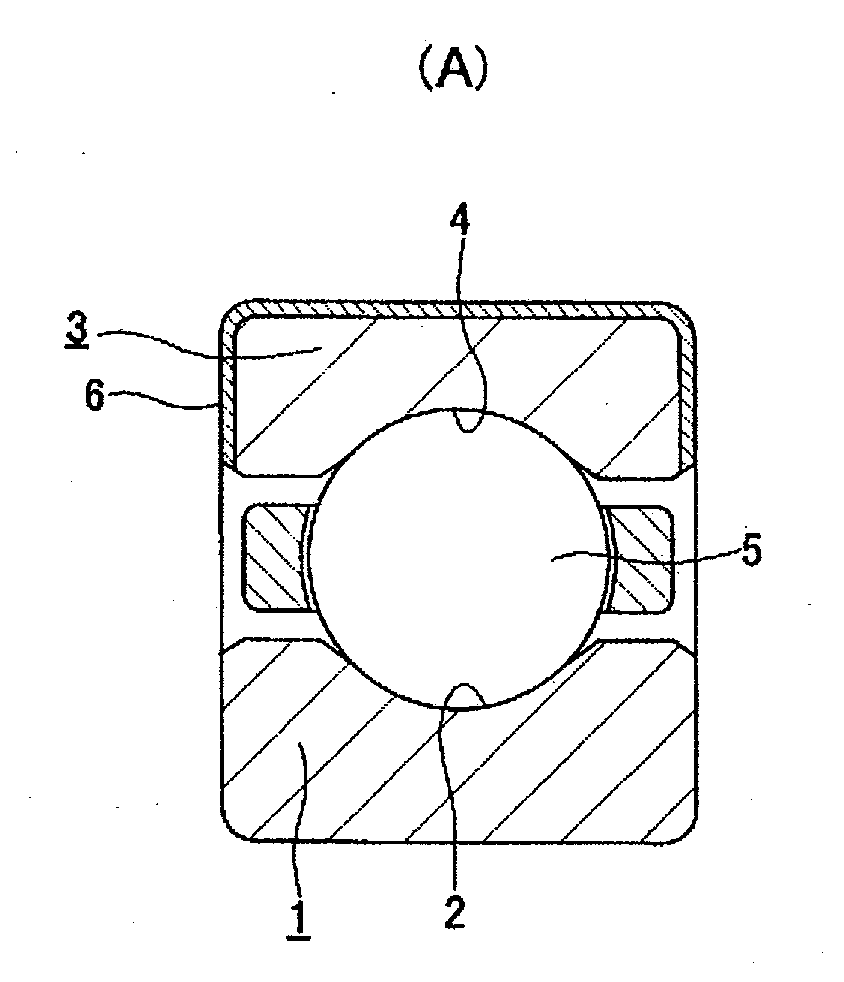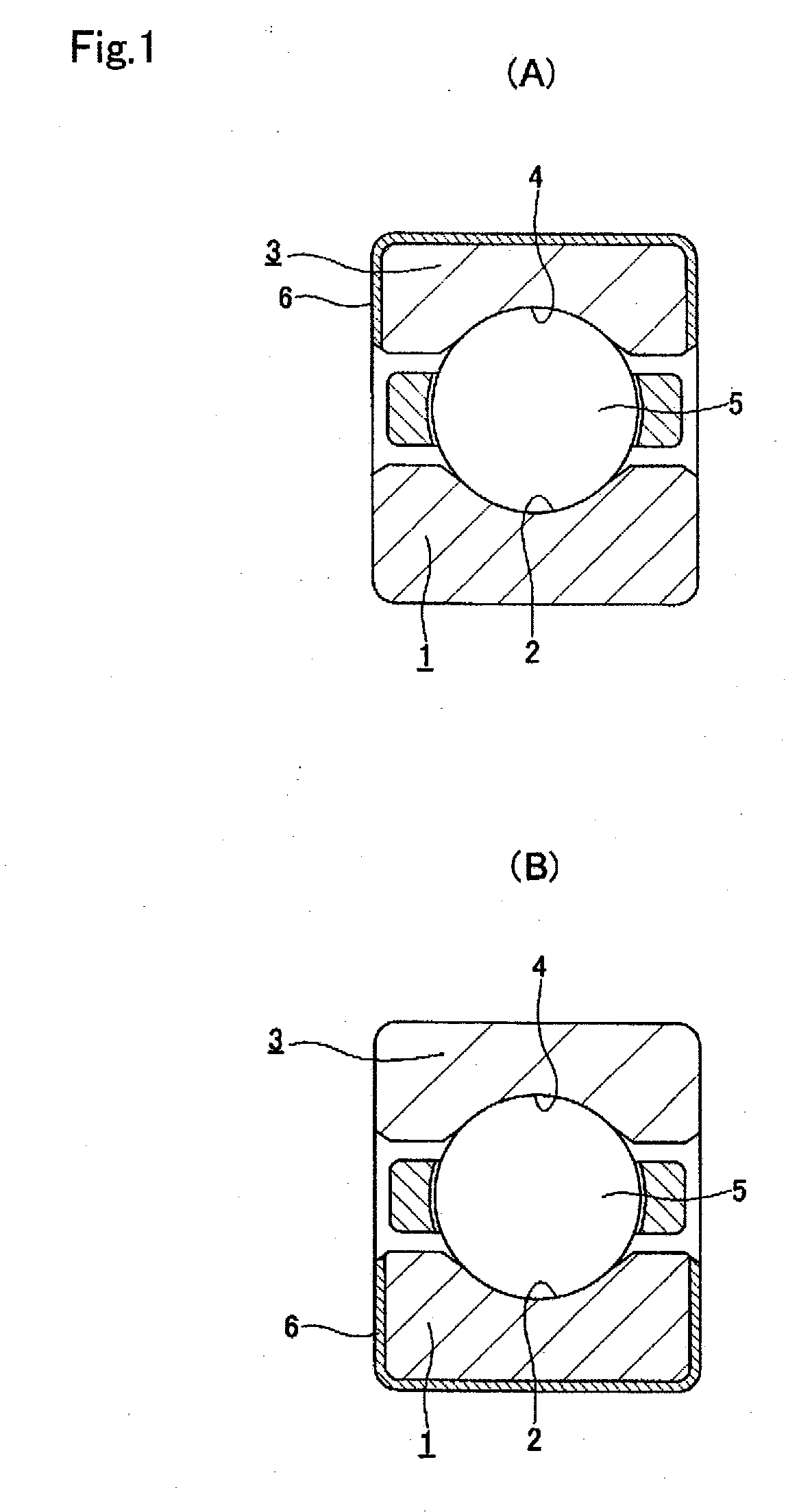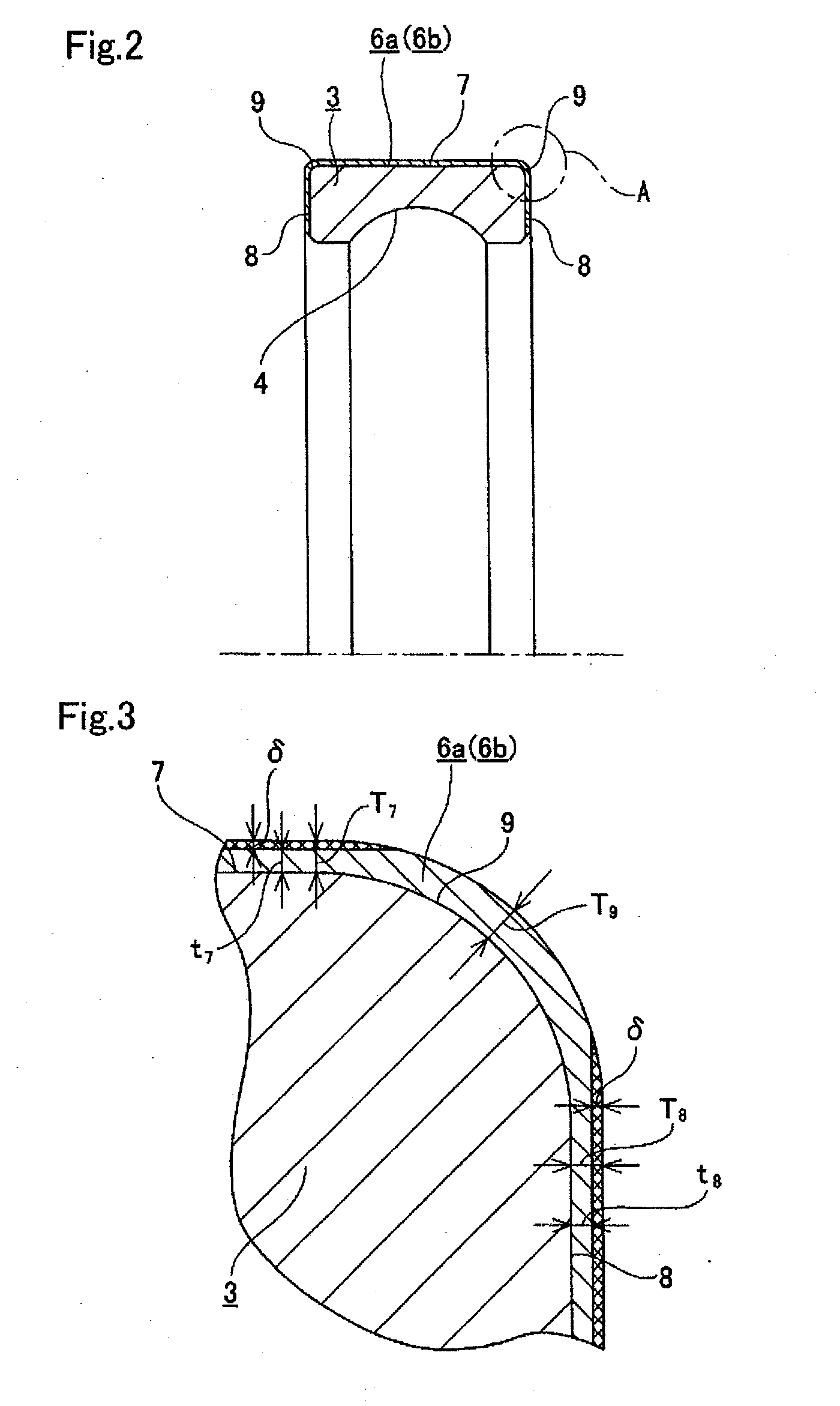Electrolytic Erosion Preventing Insulated Rolling Bearing, Manufacturing Method Thereof, and Bearing Device
a technology of insulating rolling bearings and electrolytic erosion prevention, which is applied in the direction of mechanical equipment, rotary machine parts, coatings, etc., can solve the problems of shortening the life of rolling bearings, cracks, chips, and difficulty in ensuring high levels of insulation performance, durability, low cost, and high electrical resistivity. , the effect of high electrical resistivity
- Summary
- Abstract
- Description
- Claims
- Application Information
AI Technical Summary
Benefits of technology
Problems solved by technology
Method used
Image
Examples
twelfth example
of the Embodiment
[0279]FIGS. 16 and 17 show a twelfth example of the embodiment of the present invention. In the case of the present example, partial cone concave chamfers 23, which are inclined at 45 degrees with respect to the central axis of the outer ring 3h, are formed between the two axial end faces 8 of the outer ring 3h and the inner peripheral surface 33. The two chamfers 23 are indented parts. Continuous portions 22b between the outer peripheral rims of the two chamfers 23 and the two axial end faces 8 are convex surfaces 34 whose cross-sections have a curve radius r for a partial circle shape of 1 mm or more. Moreover, it is ensured that the distance L between the inner peripheral edge parts of the two chamfers 23 and the axial end faces 8 (or between the surface of an outer diameter side insulating coating 39 coating the inner peripheral edge parts of the two chamfers 23 and the surface of the outer diameter side insulating coating 39 coating the two axial end faces 8) i...
thirteenth example
of the Embodiment
[0284]FIG. 18 shows a thirteenth example of the embodiment of the present invention. In the case of the present example, the indented part formed as a part drawn towards the inner diameter of the axial end face 8 of the outer ring 3h, being a coated bearing ring, is a plurality (three in the example in the figure) of joined partial cone concave surfaces 35a, 35b and 35c, whose angles of inclination with respect to the central axis of the outer ring 3h, being a coated bearing ring, are different, and the generatrix shapes of which are straight lines. The apex angles of the continuous portions 22c, 22d and 22e between the adjacent partial cone concave surfaces 35a, 35b and 35c, and between the partial cone concave surface 35c, which is located closest to the outer diameter side, and the axial end face 8, are all 150 degrees or more (preferably 165 degrees or more). Furthermore, in the case of the present example, it is ensured that the distance L between the surface o...
working example 1
[0292]There follows a description of experiments performed in order to confirm the effects of the present invention. The following is described with reference to FIGS. 1 to 3. First is a description of an experiment performed in order to determine the influence of the thickness of the ceramic sprayed layer and the content by percentage of alumina in the ceramic sprayed layer on non-uniformity in the thickness of the ceramic sprayed layer and the insulating characteristics. An outer ring 3 (inner diameter of the outer ring: 142 mm) constituting a single row deep groove ball bearing (outer diameter: 170 mm, inner diameter: 80 mm, width: 39 mm), whose bearing designation was 6316, was used in this experiment.
[0293]First is a description of an experiment performed in order to determine the influence of the thickness dimensions T7 and T8 of the ceramic sprayed layers formed on the outer peripheral surface 7 and the two axial end faces 8 of the outer ring 3 (non-uniformity in the thicknes...
PUM
| Property | Measurement | Unit |
|---|---|---|
| thickness | aaaaa | aaaaa |
| thickness | aaaaa | aaaaa |
| particle size | aaaaa | aaaaa |
Abstract
Description
Claims
Application Information
 Login to View More
Login to View More - R&D
- Intellectual Property
- Life Sciences
- Materials
- Tech Scout
- Unparalleled Data Quality
- Higher Quality Content
- 60% Fewer Hallucinations
Browse by: Latest US Patents, China's latest patents, Technical Efficacy Thesaurus, Application Domain, Technology Topic, Popular Technical Reports.
© 2025 PatSnap. All rights reserved.Legal|Privacy policy|Modern Slavery Act Transparency Statement|Sitemap|About US| Contact US: help@patsnap.com



